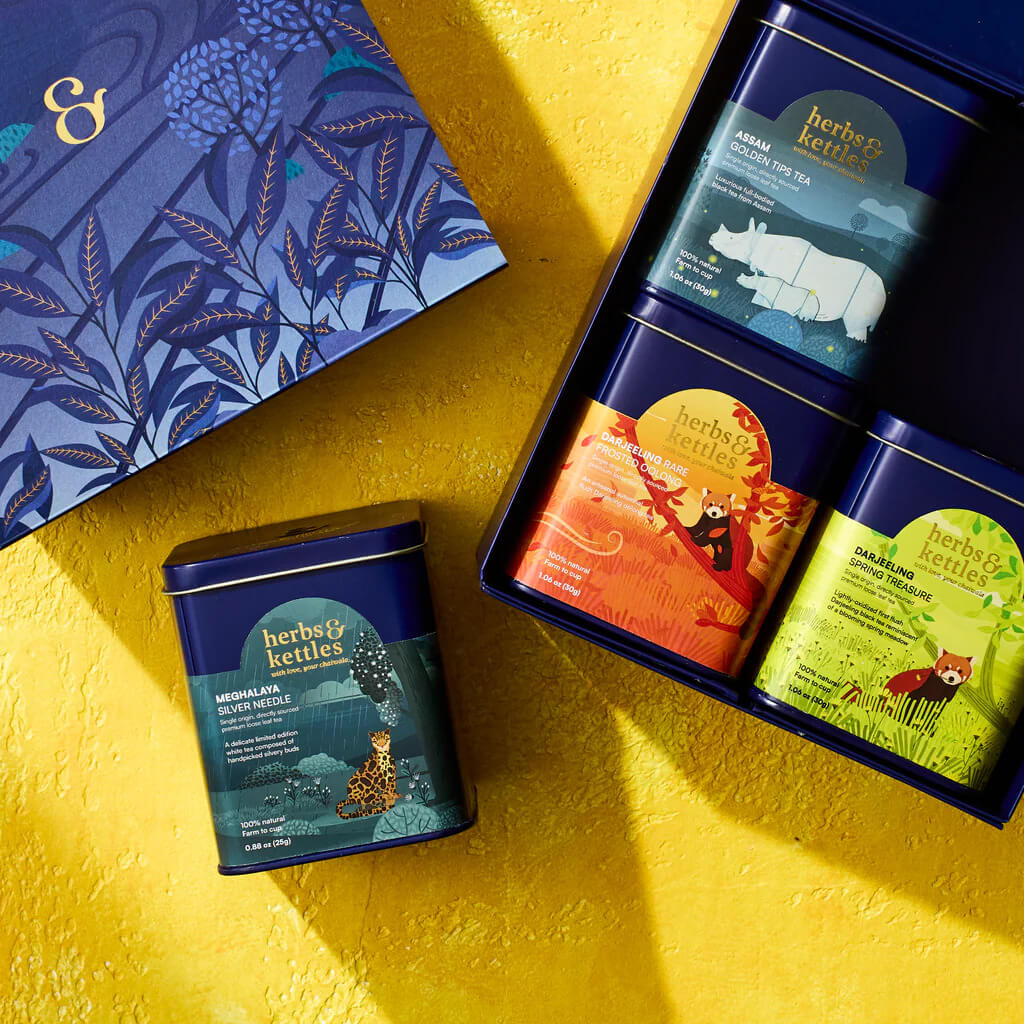No Products in the Cart

In Darjeeling's breathtaking landscape, where the misty Himalayan mountains cradle the verdant tea gardens, a world of tea unfolds. Darjeeling teas, also known as the "Champagne of Teas," are celebrated for their exquisite and distinct flushes. This guide will lead you through the different flushes of Darjeeling teas, each with unique characters and flavors. We will explore the difference between Darjeeling first flush vs second flush tea and include autumnal flush.
So, what does a Darjeeling flush refer to?
Darjeeling flush signifies the time of year or season when tea leaves are plucked and processed in the Darjeeling region. Each flush has distinct processing methods, characteristics and flavor profiles, making Darjeeling teas some of the world's most sought-after and cherished teas.
Season of Harvest: The Essence of Timing
In Darjeeling teas, time is as vital as the leaves themselves. The art of tea-making revolves around the seasons, or flushes, as they are known.
Shop Now: Darjeeling Emerald Green Tea
Type of Darjeeling Teas and Processing Methods: Craftsmanship in Every Leaf
The hallmark of Darjeeling teas lies in the timing of harvest and the meticulous processing methods.
Shop Now: Herbs & Kettles Treasures Gift Set
Mouthfeel and Flavor Notes: A Delight for the Senses
The true charm of Darjeeling teas unfolds in how they engage the senses.
Shop Now: Darjeeling Golden Summer Muscatel
Discovering the Health Benefits of Darjeeling Teas
The Darjeeling first flush, second flush, and autumnal flush offer similar health benefits. They are rich in antioxidants and contribute to improved heart, brain, bone, and dental health. These teas are a connoisseur's delight and effective in reducing acute stress and anxiety. Caffeine levels vary, with first-flush teas having lower levels than fully oxidized second-flush Darjeeling teas.
Making a Choice: A Personal Journey
Selecting a favorite among these flushes can be challenging, as each offers a unique and delightful experience. The subtle nuances of a first flush Darjeeling tea invite you to pause and savor its vegetal, floral, and fruity notes. The second flush, bold and distinct, stands out with ease. The choice often depends on your mood and emotions and the capacity to immerse in the moment. Starting with a first flush in the morning and transitioning to a second flush later in the day is a delightful practice.
Steeping and Savoring Darjeeling Teas
Indulge in the exquisite whole tea leaves from the small sustainable farmers we collaborate with, steeping your Darjeeling gongfu style. The beauty of these leaves is perfectly suited to this method. If you prefer tea with milk, add just a dash. Steep for 1-2 minutes to enjoy a cup with a sweet taste and minimal astringency—no need for milk or sugar. After your first cup, you can re-steep the leaves for multiple delicious infusions. Pair your Darjeeling teas with biscuits, cookies, scones, and cucumber sandwiches for a delightful afternoon of high tea.
You’d also like to read: A Beginners Guide To Getting Into Loose Leaf Tea
In the enchanting world of Darjeeling teas, the journey is as captivating as the destination. The flushes are not merely seasons; they are time capsules, preserving the essence of each moment in a teacup. Darjeeling's elegance, finesse, and artistry make it an unparalleled destination for tea lovers seeking a sip of nature's beauty. So, whether you savor the delicate whispers of spring, the muscatel magic of summer, or the autumnal embrace, each cup is a voyage through the seasons and a taste of Darjeeling's timeless allure.